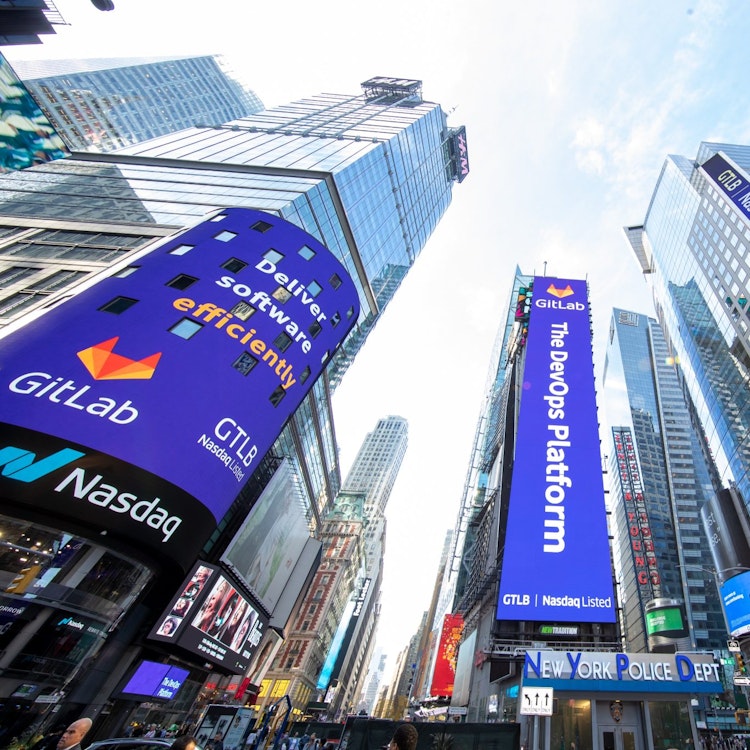The US has a lot to thank the tech industry for.
In 2008, at the time of the financial crisis, Europe’s GDP stood at $17.3tn — while in the US it was $14.8tn. In 2023, fuelled by greater investment in R&D and innovation, the US’s GDP was $27.4tn while Europe’s was $23.1tn, according to the International Monetary Fund.
According to McKinsey, by 2020, 39 of the top 100 companies in the US by value were software or software-enabled businesses. Of the top 100 European companies, only seven were software-based. In the UK, today there is only one: Sage. There are glorious exceptions such as SAP but overall, Europe has built very few global software businesses.
Technologies like AI, blockchain, quantum computing and Web3 are set to impact society as profoundly as the Industrial Revolution, except at a much faster pace. While the US leads in AI, the market is embryonic and, in Europe, we still have the time and opportunity to lead, but we must act now.
A European NASDAQ would help.
Creating tech sovereignty in Europe
Today Europe’s stock markets are dominated by “old world” leaders — British American Tobacco, Marks & Spencer, Mercedes-Benz, Shell, Airbus — and the US by the “new world”.
If we are to re-ignite economic growth in Europe, we need to incentivise greater investment in R&D, nurture innovation — and become a world leader in software.
We’re already seeing the signs that these next-generation technologies could be controlled by just a handful of companies. Several of the major US players boast trillion-dollar valuations, giving them the funding and firepower to consolidate their position in the approaching AI-led revolution.
Amazon was able to spend $85bn on R&D in 2023, substantially more than the whole UK economy combined. Organisations like Meta ($38.5bn R&D 2023), Alphabet ($45bn) and Apple ($30bn) are also all spending heavily in technology R&D. Microsoft and OpenAI, meanwhile, recently announced plans to build a $100bn AI data centre.
If you take any global leading software company, its stock is publicly listed, often on the tech heavy NASDAQ. There is no European public market equivalent. Correcting this should be a priority for policymakers across the bloc if we want to fund the digital revolution, grow our economy and control our destiny.
What would a European NASDAQ look like?
Geography, language, culture and legislation all conspire to keep European software scaleups from fulfilling their potential. Few “scale up” to the $100m revenue mark or beyond — and those that do take far longer to get there than their US counterparts.
There are a multitude of contributing factors at play — from access to capital and founder risk appetite, to market fragmentation and over-regulation. But much of it can be traced to the lack of a sophisticated public market for the region’s tech vendors. It means that many European software entrepreneurs choose to IPO in the US or sell too early to deep-pocketed US rivals or private equity firms. They never achieve their true global potential.
Take British AI company DeepMind. Founded in 2010, it was bought by Google for $650m four years later. Today it plays an instrumental role in shaping the tech giant’s AI strategy. More recently, UK GP software provider EMIS Group was acquired by America’s UnitedHealth for £1.2bn, and industrial software business AVEVA became part of French multinational Schneider Electric. These companies were publicly listed in the UK.
Could things have worked out differently with a homegrown NASDAQ equivalent? Its deep, liquid markets have a broad spectrum of technology-savvy investors, sell-side brokers and analysts that bring deep domain knowledge, not just to technology or software in general, but also to each specific sub-sector, rewarding software businesses for their growth and ambition. It’s this kind of broad ecosystem that makes US exchanges pre-eminent globally. Europe’s collection of national subscale public markets simply can’t compete against this might.
EMIS and AVEVA (undervalued by NASDAQ standards) were in the UK public market. They may have fared better on a tech-centric European NASDAQ, although Brexit makes it impossible for its home to be based in London. Such a market would provide a natural exit for private investors that assist in getting scaleups to the point of IPO. It would encourage greater scrutiny, competitive analysis and benchmarking of ambitious European software firms, all of which play an important role in a company’s growth journey. Until that happens, we can expect to continue to see companies list in the United States,like Spotify, UiPath and SAP have in recent years.
A tech-centric public market is key
We stand at a critical point in time, where it’s still possible to catch up with the US and build a world-leading software industry over the coming decade. Several developing sectors — from cloud and quantum to AI — offer the UK and Europe a tremendous opportunity to find their domestic champions to disrupt what went before and prosper on the world stage. But the digital transition alone will require huge sums of funding – €125bn (£107bn) per year, according to the European Central Bank.
This is where a European NASDAQ, and a single market regulator like the US Securities and Exchange Commission, would add enormous value. A tech-centric public market is key, unlocking more capital for organisations that are listed on it and encouraging them to stay in Europe.
The World Economic Forum estimates that 70% of the economic value created over the coming decade will be based on digitally enabled platform business models, due to the rapid digitalisation of economies around the world.
With $2-4tn of value-add opportunities up for grabs annually up to 2040 — that’s six times the cost of net zero transition or 90% of Europe’s social spending — we must all work together to ensure Europe is at the heart of the digital revolution, that we protect our technological sovereignty and our strategic autonomy, while making technology the core to our plans for economic growth.
There’s still time. But only if we recognise and grab this opportunity now.



